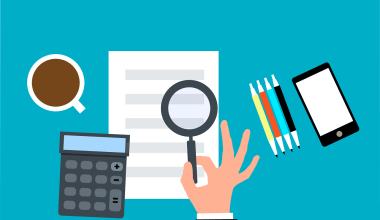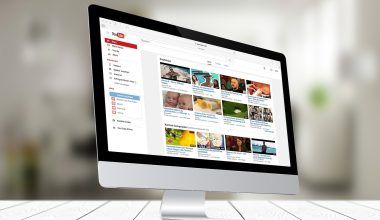In the past, getting your music on platforms like Spotify felt like an impossible task if you didn’t have a record label backing you. However, times have changed, and now independent artists can easily distribute their songs on Spotify without the need for a label. This shift has opened the doors for countless musicians to share their music with the world. Whether you’re a budding artist or someone looking to go independent, this guide will help you navigate Distribute your song on Spotify without a label.
Why Spotify?
Spotify is one of the most popular streaming platforms in the world, boasting millions of active users. It’s a space where listeners discover new artists daily, making it a fantastic platform to grow your audience. Unlike traditional radio or CDs, Spotify allows artists to reach listeners globally without needing a middleman.
And here’s the best part: you don’t need a record label to make it happen. You can distribute your song on Spotify on your own terms, keeping creative control and earning royalties directly.
Step 1: Understand How Music Distribution Works
Before diving into the process, it’s important to understand what music distribution is. Music distribution is the process of getting your songs onto streaming platforms like Spotify, Apple Music, and Amazon Music. Traditionally, this was handled by record labels, but now independent artists can work with digital distribution services to make their music available.
These distribution services act as a bridge between you and Spotify. They upload your music, manage metadata, and ensure your songs are delivered to the platform properly. In return, they may take a small fee or commission from your earnings.
Step 2: Choose a Digital Distributor
There are several digital distribution services available, and each has its own features and pricing. Here are some popular options:
- Delivermytune: Known for its affordability and ease of use, It charges a yearly fee and allows unlimited uploads.
- TuneCore: Another popular choice, TuneCore charges per release but offers robust tools for tracking your music’s performance.
- CD Baby: CD Baby charges a one-time fee per release and takes a small percentage of royalties.
- Amuse: A free option that still offers decent features, though premium plans are available for more benefits.
When choosing a distributor, consider factors like pricing, payout frequency, and the additional features they offer. Remember, your goal is to get your music on Spotify without breaking the bank or sacrificing quality.
Step 3: Prepare Your Music for Upload
Before uploading your song to a digital distributor, make sure it’s ready for the world to hear. Here’s what you’ll need:
- High-quality audio files: Ensure your song is mixed and mastered professionally. Spotify requires specific audio formats, usually WAV files with a sample rate of 44.1 kHz and 16-bit resolution.
- Album artwork: Your cover art should be eye-catching and meet Spotify’s requirements (3000 x 3000 pixels, JPG or PNG format).
- Metadata: Include all relevant details about your song, such as the title, artist name, and genre. Accurate metadata helps listeners discover your music.
Step 4: Upload Your Song Through the Distributor
Once you’ve chosen a distributor and prepared your music, it’s time to upload. The process is straightforward:
- Create an account on your chosen distribution platform.
- Upload your audio files and cover art.
- Fill in metadata, including song title, artist name, and release date.
- Specify which platforms you want your music to appear on. Be sure to select Spotify!
- Submit your release for approval.
Most distributors will review your submission to ensure it meets their guidelines. This process typically takes a few days to a week.
Step 5: Promote Your Music
Getting your song on Spotify is just the beginning. To reach listeners, you need to actively promote your music. Here are some tips:
- Share on social media: Use platforms like Instagram, TikTok, and Twitter to announce your release and share snippets of your song.
- Pitch to Spotify playlists: Spotify allows independent artists to submit their songs for playlist consideration through Spotify for Artists.
- Collaborate with influencers: Partner with content creators who can use your music in their videos, exposing it to a wider audience.
- Engage with your fans: Respond to comments, host live streams, and build a community around your music.
Step 6: Monitor Your Performance
Once your song is live on Spotify, it’s important to track its performance. Platforms like Spotify for Artists provide insights into how your music is doing, including streams, listener demographics, and playlist placements. Use this data to refine your promotional strategies and plan future releases.
The Benefits of Going Independent
Distributing your music on Spotify without a label offers several advantages:
- Creative control: You have full authority over your music and how it’s presented.
- Higher earnings: You keep a larger share of your royalties compared to traditional record deals.
- Flexibility: Release music at your own pace without being tied to a label’s schedule.
Common Mistakes to Avoid
While the process is simple, there are some pitfalls to watch out for:
- Skipping professional mastering: Poor sound quality can hurt your chances of being noticed.
- Ignoring metadata: Incorrect or incomplete metadata can make your song harder to find.
- Neglecting promotion: Simply uploading your song isn’t enough; active promotion is key to success.
Final Thoughts: Your Music, Your Rules
Distributing your song on Spotify without a label is an empowering experience. With the right tools and strategies, you can share your music with the world and grow your fanbase independently. Remember, consistency is key. Keep creating, keep promoting, and most importantly, enjoy the journey.
Related Articles:
For further reading, explore these related articles:
- How to Release Your Remix on YouTube Music and Make Money
- How to Release Your Remix on YouTube Music Easily
For additional resources on music marketing and distribution, visit DMT RECORDS PRIVATE LIMITED.






